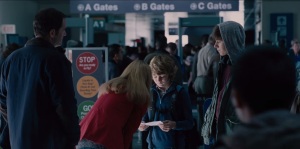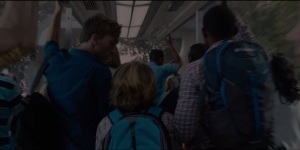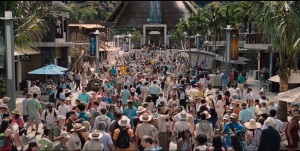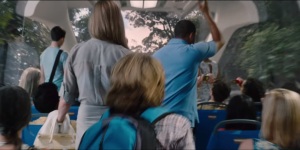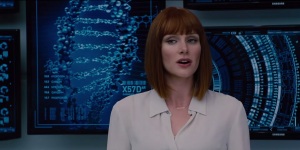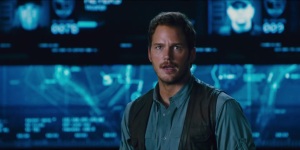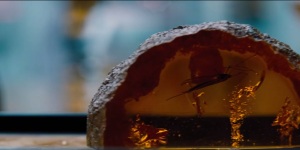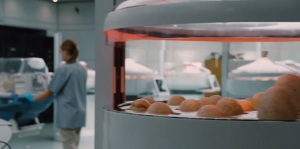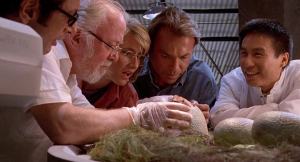I was following Stray on and off during its development for a few years, eagerly awaiting the release of the Unreal Engine powered cat walking simulator that involved exploring smoky, neon drenched cyberpunk city scapes. I caught wind of it when I saw a very early tweet promising more details to come in future that featured at least one delightful gif. That initial impression, forged by the gif of a cat wandering aimlessly, just being in an evocative environment, is what stuck with me the most, even as the game developed and crystalised into something more the closer it got to release. Effectively, the Stray that lived in my mind’s eye was the Stray of the prototype gifs that captured a game in a time before any promise of the ambition and scope of environment and narrative of the final release.
So it came as more of a surprise to me than It should have when the game opened on a colony of cats just living life and enjoying each other’s company under clear blue skies. It is during this opening that Stray tips its hand about one of its preoccupations: simulating with uncommon care and fidelity, the act of being a tiny kitty. The game will not progress until you walk up to each member of your colony and hit Triangle, the universal Interact as a Cat button (it is important to note that there is a separate button for non-cat interactions. This makes sense in context). This triggers a series of interactions, each of which is different but all something a cat would do with a friendly cat. They are paid back in kind by your colony members. Play fighting, nuzzling, flopping on your side and being bopped in return. You all then gather together to sleep.
It was a delightful opening gambit that sold its commitment to making the player as much of a facsimile of a cat as possible within its limited gameplay frame. These little touches continue throughout the game and hint at developers who are very familiar with and love how cats behave. Shortly after your cat wakes up again and progresses to the rest of the introductory sequence, you are presented with the best button prompt in gaming since Titanfall 2’s “Press LB to time travel.” The game tells you to “press Circle to meow.” The first gameplay achievement I unlocked was “A Little Chatty”, awarded to me for meowing 100 times. I unlocked it within my first 5 minutes of play. You are able to scratch at carpets, walls and sofas. There are dedicated sleeping spots. You can stop and lap water out of bowls or puddles. If the mood takes you, you are able to rub up against some characters’ legs. Pool balls can be swatted around. You can interrupt a game of mahjong by jumping onto the table and scattering the tiles onto the floor. The players of that mahjong game react to this with dismay. These interactions, triggered by hitting the dedicated Interact like a Cat button, for the most part, confer no immediate gameplay benefit to the player. It is the canniest trick the game plays, simultaneously priming the player to “think like a cat” and to allow for plausible deniability when the game anthropomorphises the cat (by this I mean the game relies on the cat to follow logic and patterns of behaviour that are decidedly human and not feline.)
The game spends its limited time with other cats on the surface trying to get you to bond with them as expeditiously as possible. It offers you multiple opportunities to interact with them by playing with/nuzzling them directly, meowing in call and response with them, scratching on trees together, or gathering around puddles to lap up some water. It is a section of the game that is utterly brimming with charm and makes it all the more painful when you’re separated from them in a tremendous fall into the Walled City. I really did spend the rest of the game primed with a sense of pervasive misery after witnessing the precious baby limp for a few steps after landing to a chorus of distressed meows from his family before collapsing and passing out. He comes to all alone, surrounded by silence.
I might have buried the lede here, but if you are sensitive about animals in pain, this game does contain two painful falls that result in temporary limps, enemies that latch onto the cat and overwhelm him until he collapses to be eaten, sentry drones that shoot electric bullets at the cat and will down him in one shot, and (spoilers) an unavoidable cutscene where the cat is shot by said drones off screen (end spoilers). If you don’t like unhappy animals, Stray has moments of that too.
Unfamiliar Surrounds
You find yourself trapped in the depths of a city that has been sealed off from the outside world. Above you, the stars are actually lights in a far off ceiling. Your first few minutes exploring this city take you through abandoned locales, slowly teaching you through context clues. You are introduced to the game’s first threat, the zurk, gradually. At first, they appear in small numbers and scurry away from you, until you come across a partially eaten robot (called a Companion in game) covered in them. They scatter as you approach the dying Companion, but their menace is made clear. It is not long before you are confronted with a swarm of them and are given the button prompt to run. this should be enough of a clue that they are bad news and you should not stick around.
The game takes a similar approach to teaching you how to interface with its puzzles and its world. In the time you spent above ground with your family, it forced you to engage with the other cats like a cat would, gating progress behind this. It then presented organic opportunities to act like a cat, rewarding your indulgences and compliance with cuteness. Early in your exploration of the inside of Walled City 99, you are presented with a line of paint cans, and approaching them gives you a button prompt with no written context. Interacting with them causes you to knock them off the edge of the platform they are on, you know, like a cat would. This same interaction s used in a number of puzzles throughout the game, including the very next puzzle.
Your path through the world has you running from rooftop to rooftop, balancing on pipes and planks, and crawling into small holes and windows. Your perspective, so low to the ground compared to a human or a Companion as the case may be, invites you to interrogate the way you inhabit and navigate space. You can get to places a humanoid character otherwise wouldn’t be able to because you are a cat. If you didn’t grok this intuitively through the course of play, the game makes it explicit by having characters tell you as much, not once but twice. I wasn’t sure how much of the cat behaviour priming was critical to progressing through he game until I came across a person with no cat experience who said they were struggling with the game until they tried to think of what a cat would do and where a cat would go. So there you go, a singular data point.
A robot by any other name
If you are sensitive to spoilers, please stop reading now.
Your journey through the game takes you through linear platforming and puzzle sections which lead into a non-linear hub section where you are free to explore and complete objectives somewhat out of order. While the linear sections can sometimes feel like you are being rushed through them to avoid threats, the hub sections allow you to slow down and soak in the atmosphere. The hubs are Companion settlements that you come across at different levels of Walled City 99 as you slowly climb your way out. It is here where you spend your time in Stray observing and interacting with the characters that inhabit Walled City 99. The first one you meet is a consciousness trapped in the city’s network, whom you help download into a drone named B12. B12 acts as your means of communicating with the Companions you come across, and parallels their behaviours and cultures with that of the city’s long extinct human residents. You learn through your travels that the Companions of the lower levels of the city began replicating human customs uncritically through acts of random mimicry. They began eating and drinking before setting up restaurants that serve RAMen (It’s made of RAM modules. That’s the joke). B12 observes a mural before musing that the Companion’s art has slowly transitioned from mimicry to genuine expressions in their own right. It becomes evident as you travel through the game that the Companions have, as a society, moved from mimicry to developing their own culture and customs.
There are little flashes of humanity in the Companions’ behaviours. You run across Companions that take care of plants, meditate, play a guitar-like instrument, run businesses, make mix tapes and dance defiantly, play table top role playing games, forget their character sheets for their TTRPGs, attempt to have haircuts, knit ponchos and live in family units who love and miss each other. You can run into Companions that you can affectionately rub up against, and more often than not, they will respond joyfully. Some of them invite you in to take shelter. They have developed a system of spirituality and beliefs based on the materials humanity left behind, believing, for example, that the outside is a myth and that there is no world to be experienced outside of the confines of the walled city. In the lowest levels of the city, they even believe that they are unable to break through to the upper levels, that they are destined to stick in the slums, picking through scraps and garbage filtered down from those on high.
It is easier to imagine the end of the world…
As you progress you come to realise that the legacy that humanity left behind has created a shaky foundation for the Companions to build their society on. You also begin to realise that Stray isn’t a cat game, as much as it is a game that uses the alien perspective of a cat in a post-humanity Earth to chew upon and interrogate capitalism as a system of oppression in one handy, vertically stratified microcosm. Stray posits that capitalism is a destructive system that causes stratification in society. The humans of Stray created the Walled Cities as a means to protect themselves from an unspecified plague. Walled City 99 is fashioned the safest city on Earth. It is treated as exclusive. But only those on the upper layers got to live with any degree of luxury. They died out because the rich recreated the material conditions of the old world within the walled cities, saving all the resources for them and apportioning limited resources to lower levels. The farther down you go, the fewer resources apportioned. The rich never felt the need to heed science and take precautions against the plague, and so were doomed to a slow death. In the meantime, they engineered a bacteria to eat through all the garbage they were creating. In their absence, the bacteria eventually developed into the zurk and began to eat whatever they could, organic and inorganic alike. In their wake, humans and their capitalist society continue to poison the world.
The Companions, in replicating human customs have also replicated capitalism. They continue their isolation of robots in lower layers. They continue to apportion fewer resources to them, forcing them to live off cast offs and limited allocations of energy. A company, Neco Corp, survived the fall of humanity and continues to function. The hub city surrounding Neco Corp is a police state in which Companions are disappeared for agitation or suspected agitation. Sentry bots were created by humanity to act as surveillance. In what is becoming a pattern, their years of operation in a world set up by humanity but not overseen by it has hardened them into unflinching enforcers of order, operating beyond their original mandate. But this is a familiar notion. We currently live in a world where the powers at be continue to test how far they can overreach in the name of security. As you enter this hub, you see a random Companion being arrested on mere suspicion of association with a wanted individual. The wanted individual in question is the Companion you are looking for, one who is trying to break free from the Walled City to take a glimpse of the outside world. This quest is fashioned as a journey of curiosity, of a burning sense of wanting to see the sky and breathe the fresh air. Of following a dream and nothing more. Around her and her handful of companions, life continues as it always has. Before the three of you are able to make your escape, you are double crossed by an associate who was paid to turn you in to the authorities. Even in a world devoid of humans, filled by entities who fashioned themselves identities from seeming nothingness, there are still individuals who preference gaining money over the lives of others. It is easier to imagine the end of the world than the end of capitalism. It is a series of sour notes in a game that tries its hardest to find the moments of joy and life in squalor.
The game ends on a bittersweet and ambiguously hopeful note. The cat is able to escape and has opened the dome over Walled City 99 in the process, filling the world with natural sunlight for the first time in centuries. And yet the structures of cruelty erected by the game’s narrative have given me no hope for a better future for the Companions. Perhaps my read is too pessimistic. Perhaps I am missing something. I have seen the cruelty of our world, and any society built on the foundations we have laid down is doomed to the same path of misery.
To me, Stray is a melancholy game punctuated by stabs of sharp sadness.
Stray observations:
- I like very much that the depth of field around the cat in an early cutscene fails due to fur in the same way that early portrait mode on an iPhone would. Very true to life.
- I love that when you first get your backpack, the cat flops over, and then spends a bit of time walking super low to the ground. This will be familiar to anyone who has put a harness on a cat. Truly, the devs knew what they were doing.
- The cat does the licking his lips thing when he is upset/scared/angry. So much detail has been paid to replicating real cat behaviours.
- You scratch on objects by alternating presses of R2 and L2. this is an element of Kinaesthetic gameplay I first remember experiencing in Call of Duty Modern Warfare 2 while scaling a cliff using ice picks, and then later experienced in a more benign context in Grow Home (albeit also while climbing). I just find it kind of interesting that this mechanic transcends external trappings of genre and setting to convey the same presence boosting intent.
- Another thing that reminded me of Titanfall 2, there is a portion of the game where you are given a means to fight back against the zurk. As soon as you have completed this segment, that ability is taken from you, the device destroyed due to overuse, much like the time travel device from the Effect and Cause level. The developers try to shake things up like this from time to time and don’t let any one wrinkle overstay its welcome.
A little side note on Stray’s imagery:
With a twitter @ of @HKdevlog, it is understandable to be sceptical of the French developers, Blue Twelve Studio, for muddying the water about their origin. It is in the history of the cyberpunk genre to make use of Asian iconography due to the economic anxieties of the 80s, when the west did fear Japan as a rising technological powerhouse. Whether or not that is a dealbreaker for you, I will not judge. I would merely like to take the time to invite people to have a look at what is being discussed regarding the developers obfuscating their identities, the game’s refusal to tackle the history of Kowloon Walled City, and even the problematic framing being used by people to discuss the game’s failure to engage with the imagery it is using:
The “fun” of developers hiding who they are & why they use settings/ tropes is a tactic to claim innocence and to obscure any agency. Games could be more impactful by having these conversations about influence, politics, and histories. Instead we choose to erase them (3/3).
as much as I agreed with the importance of providing historical context (instead of just ripping off other cultures for aesthetics), Sisi Jiang’s take on this issue is problematic https://t.co/4Bjk7QlZzz
Given the shenanigans around the development of the game, I don’t think a lot of HKers are exactly Team Stray… but the Walled City is part of our history, and used and abused in media and discourse so much that if it seems we’re being a bit protective of its legacy, we are.
This whole thread is worth a read to be honest:
Oh. I already regret clicking on that article.
““The graffiti and signage is a huge question mark. Anything in English is clearly player facing but [in-game], who would those tags be for?” Lam told Kotaku. ”
… errrrrr https://t.co/TKuzI34p4C
Another thread for your consideration follows:
Staying out of the Stray Discourse since I’ve not played it but I find the way some (US-based) critics seem to be painting the Kowloon Walled City as a site of colonial trauma (https://t.co/zlPUmBXfZR) very flattening and inconsistent with how it’s remembered by former residents.
